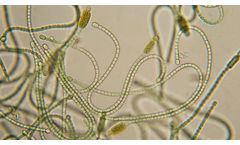Gastrointestinal Illness Articles & Analysis: Older
19 articles found
Bedfont® Scientific Limited hosted an insightful webinar Mastering Gut Health: Understanding SIBO, Carbohydrate Malabsorption, and Accurate Gastrointestinal Investigation. Gastrointestinal Physiologist and Bedfont® Medical Advisory Board member Melissa Dooley, led the discussion and shared valuable information on various gastrointestinal disorders and the importance of not ...
Cyanotoxins are toxic substances produced by cyanobacteria, or blue-green algae, which can proliferate in water bodies under conditions like high nutrient levels and warm temperatures. There are over 1,118 different cyanotoxins identified globally in freshwater environments across 66 countries, illustrating the widespread nature of this ...
Bile, a complex fluid produced by the liver and stored in the gallbladder, plays a crucial role in the digestion and absorption of fats, fat-soluble vitamins, and other essential nutrients. Ox bile extract powder, derived from the bile of oxen, is a natural supplement that has garnered significant interest in the scientific and healthcare communities for its versatile physiological functions and ...
It has been said that the 21st century is the century of peptide drugs, and the fate of this substance, which lies between a large protein and a small molecule compound, is bound to be extraordinary. What are peptide drugs? Peptides are a class of compounds made up of amino acids linked by peptide bonds and are chemically active substances commonly found in living organisms. According to the ...
They evaluated the surfaces on which the highly contagious noroviruses, which cause gastrointestinal illnesses, are frequently found. The aim of the study was to analyze the level of contamination in closed or semi-closed facilities such as nursing homes, schools, kindergartens, youth shelters, hospitals and social health centers. ...
Due to a lack of robust in vivo gut models, animal studies are generally required to evaluate gut toxicity. However, these studies can be lengthy and expensive and may not accurately recapitulate the behavior of the human gastrointestinal tract. Drugs are thus often developed with undesired gut side effects that are not apparent until clinical trials. Organ-on-a-chip models are the closest ...
By: Ali Ibrahim Shar, Gul Afshan Soomro, Ghulam Abbas Shar, Muhammad Bachal Korai Abstract Forty (40) specimens of the gallstones were taken from the infected peoples who were admitted and cured in the Peoples University of Medical & Health Sciences for Women, Shaheed Benazirabad, Nawabshah, Sindh, Pakistan. In our work gallstones (total 40) were found in the age ranges from 20-60 years for ...
First Name: Barbara Age: 60 Location: Seattle Occupation: Retired medical assistant How long have you had migraines? I started suffering from migraines as a child. I grew up in the 60’s in Iowa, and at that time my parents nor I knew what migraines were or to seek treatment for such a medical problem as this. When I was 32 years old, I have a vivid memory of having a terrible migraine, ...
ByCEFALY
Drinking water related infections are expected to increase in the future due to climate change. Understanding the current links between these infections and environmental factors is vital to understand and reduce the future burden of illness. We investigated the relationship between weekly reported cryptosporidiosis and giardiasis (n = 7,422), extreme precipitation (>90th percentile), ...
There is an increasing awareness that drinking water contributes to sporadic gastrointestinal illness (GI) in high income countries of the northern hemisphere. ...
This study represents the first systematic review and meta-analysis conducted to assess the association between swimming in recreational water and the occurrence of respiratory illness. Most studies focus their attention on gastrointestinal illnesses occurring after exposure to microbial polluted water. ...
In this analysis, we examine the relationship between modeled water residence time (WRT), a proxy for probability of microorganism intrusion into the distribution system, and emergency department visits for gastrointestinal (GI) illness for two water utilities in Metro Atlanta, USA during 1993–2004. We also examine the association between proximity to the nearest ...
I’ve spent years as a biotech cheerleader, trumpeting the idea that biology can power innovation across diverse industries. Lately, I’m getting the feeling that experts in lots of other fields are also taking up the cheer. Case in point: Techonomy, the annual conference in Palo Alto that explores how technology is integral to the economy in which we live. At this spring’s ...
Among swimmers, 6.6% reported gastrointestinal (GI) illness compared with 5.5% of non-swimmers (unadjusted χ2 p < 0.001); 6.0% of swimmers and 4.9% of non-swimmers reported respiratory illness (p < 0.001); 1.8% of swimmers and 1.0% of non-swimmers reported ear problems (p < ...
Acute gastro-intestinal illness (AGI) is a major cause of mortality and morbidity worldwide and an important public health problem. Despite the fact that AGI is currently responsible for a huge burden of disease throughout the world, important knowledge gaps exist in terms of its epidemiology. Specifically, an understanding of seasonality and those factors driving seasonal variation remain ...
The objectives of this study were to examine the seasonal changes in the risk of gastrointestinal (GI) illness of beachgoers in the tropics, to compare the association between GI illness and water quality using various indicator organisms, and to study other beach health hazards. ...
The influence of consumption of salads on exposure to gastrointestinal diseases was assessed in urban environments in Kumasi, Ghana. Data was collected using a crosssectional survey involving 15 salad sellers and 213 consumers and microbiological laboratory analysis of 96 samples of readytoeat salad. Findings showed higher contamination in streetvended salads than those in cafeterias with ...
The objective of this study was to evaluate water quality and daily cumulative health effects (gastrointestinal, skin, and respiratory illnesses) for bathers at a non-point source subtropical marine recreational beach in order to better understand the inter-relationships between these factors and hence improve monitoring and pollution prevention techniques. ...
Published research on outbreaks of gastrointestinal illness has focused primarily on the results of epidemiological and clinical data collected postoutbreak; little research has been done on actual preventative practices during an outbreak. ...












